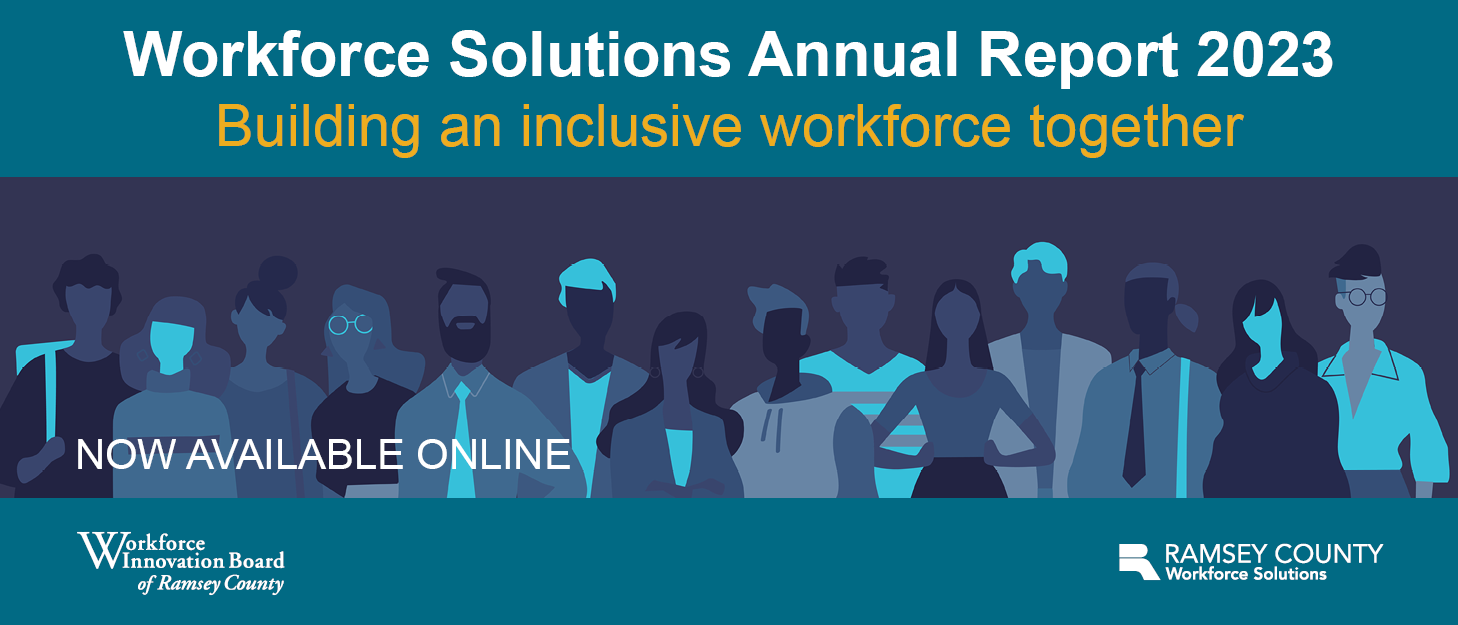Workforce News
Education Will Innovate: Addressing Postsecondary Challenges in Workforce Development

30 April 2024
Top 10 Trends to Watch in Ramsey County’s Workforce Landscape: Part Four
The supply and demand of employer needs and workforce availability is an ever-shifting dynamic, tethered together but each impacted by differing factors. Like many communities nationwide, Ramsey County faces a shortage of workers for existing jobs. Numerous factors have led to that scenario, but meaningful, collaborative partnerships between postsecondary education entities, government institutions and industry offer the potential to reimagine programming and education models to resolve the talent shortage. This education challenge is one discussion point in the RealTime Talent report titled Top 10 Trends to Watch in Ramsey County’s Workforce Landscape.
Talent and skill shortage
Historically, Minnesota has exhibited a low unemployment rate compared to other states. In 2022, the Minneapolis/Saint Paul metropolitan area ranked third out of the 53 largest metro areas nationally for low unemployment rates. Yet despite Minnesota having one of the country’s highest labor force participation rates and being ranked a top state for business, Minnesota also has a significant talent shortage. Many employers cannot find enough workers to fill their job openings, illustrated by the fact that, as of September 2023, Minnesota had about 51 available workers for every 100 open jobs.
One leading contributor to the shortage is a lack of workers possessing the skills required for jobs, with an examination of the state’s education system offering a potential explanation. One illustration is that despite a reputation for great high schools with high test scores, in 2022, Minnesota ranked second worst in the nation in racial inequality in state education systems. Data for the study was taken from differences between white and black students in areas such as high school and college degrees, test scores, and graduation rates.
Postsecondary education, therefore, faces numerous challenges, from disillusionment with the education system and dropping enrollment to shifting industry needs, resulting in a mismatch between skill requirements and those potential workers possess. Proactive measures within the state's education system can help address the talent shortage.
"The future of postsecondary education in Ramsey County hinges on our ability to innovate and adapt to the changing dynamics of the labor market,” said Erin Olson, Senior Director of Strategic Research with RealTime Talent. “By addressing issues such as dropping enrollment and faculty shortages head-on, we can pave the way for a more resilient and responsive education system."
Connections through education
One of the biggest challenges facing postsecondary education in Ramsey County is dropping enrollment rates and disillusionment with the traditional education system. That said, signs of improvement are on the horizon, with initiatives underway to enhance student support systems and provide more flexible learning options.
"Providing a variety of options for students, including modality, curriculum, and support services, will play a crucial role in re-engaging learners and fostering a culture of lifelong learning,” adds Olson.
Moreover, the shifting landscape of industry needs drives a paradigm shift in postsecondary education. Occupations requiring various levels of education and training are experiencing varying growth rates. While all employment in Ramsey County is projected to decrease slightly over the next decade, occupations typically requiring postgraduate or bachelor's degrees are expected to remain stable or experience modest growth. In contrast, occupations requiring two-year degrees or certificates may face some contraction.
Close partnerships
To address these trends, closer partnerships between educational institutions, industry stakeholders and secondary education systems are crucial. Olson emphasizes, “Closer partnerships with industry and secondary education will enable postsecondary institutions to align program outcomes with industry-recognized credentials and develop verifiable skills that meet the evolving needs of employers.”
In addition to forging stronger ties with industry, creative financial solutions for students are imperative to ensure accessibility and affordability of postsecondary education. Initiatives such as scholarships, tuition assistance programs and income share agreements can help alleviate financial barriers and expand access to education and training opportunities.
Course into the future
Going forward, postsecondary education and career training entities in Ramsey County must embrace flexibility to respond effectively to industry changes and student needs. Olson underscores the importance of meaningful partnerships with government and industry to drive innovation and reimagine education models. "By working collaboratively with key stakeholders, we can chart a course towards a more dynamic and inclusive education ecosystem that empowers individuals to thrive in the workforce of tomorrow," she concludes.
As Ramsey County prepares to navigate the challenges and opportunities on the horizon, a spirit of innovation and collaboration is essential to shaping brighter futures for postsecondary education and workforce development in the region. Through strategic planning, proactive initiatives and sustainable partnerships, Ramsey County is poised to lead the way in educational innovation and workforce readiness.
Top 10 Trends to Watch in Ramsey County’s Workforce Landscape from RealTime Talent is a compass, guiding Ramsey County through the complexities of a transforming workforce. The trends identified pave the way for a resilient, innovative and inclusive future. Each trend will be explored in-depth throughout 2024, charting the course for Ramsey County's workforce in the coming years.














